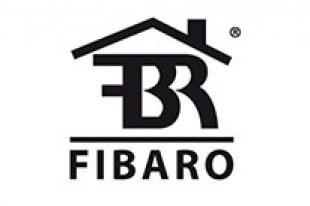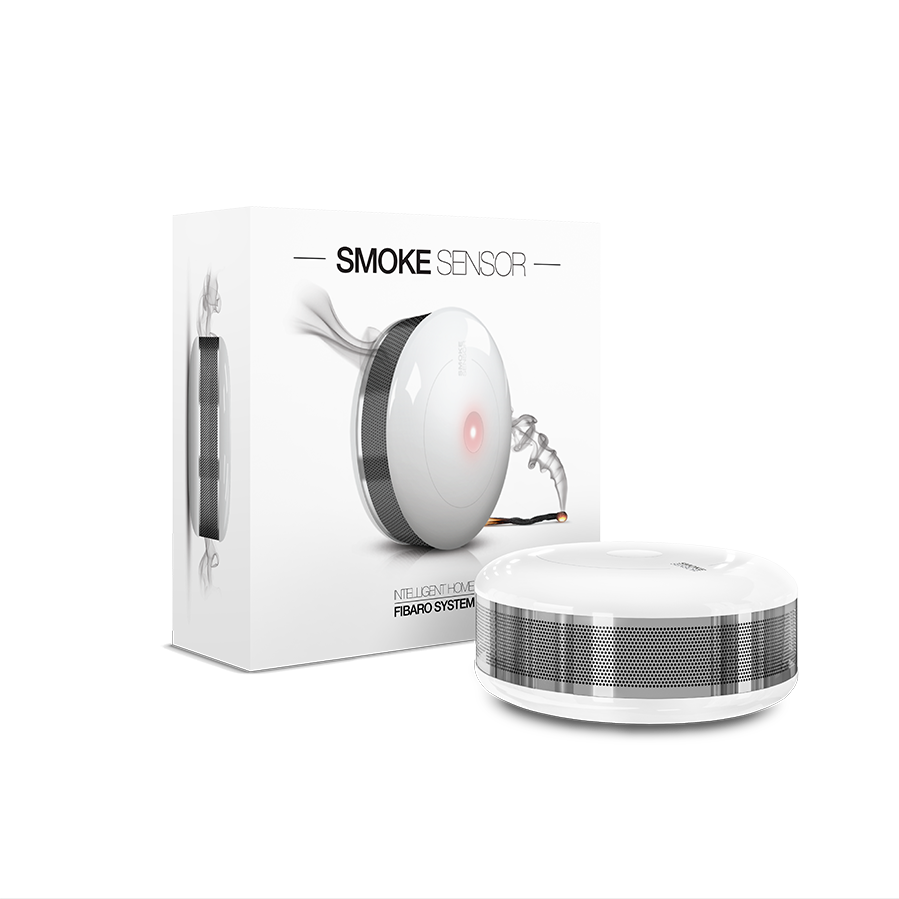Parameter 1: Fibaro Smoke Sensor sensitivity
There are 3 levels of sensitivity to smoke presence. Level 1 means the highest sensitivity. Rising the parameter value lowers the sensitivity to smoke presence.
Size: 1 Byte, Default Value: 2
| Setting |
Description |
| 1 |
HIGH Sensitivity |
| 2 |
MEDIUM Sensitivity |
| 3 |
LOW Sensitivity |
Parameter 2: Z-Wave notifications status
This parameter allows to activate excess temperature and/or enclosure opening notifications sent to the main controller.
Size: 1 Byte, Default Value: 0
| Setting |
Description |
| 0 |
all notifications disabled |
| 1 |
enclosure opening notification enabled |
| 2 |
exceeding temperature threshold notification enabled |
| 3 |
all notifications enabled |
Parameter 3: Visual indicator notifications status
This parameter allows to activate visual indications but does not apply to major alarms, such as FIRE, TROUBLE and LOW BATTERY ALARM.
Size: 1 Byte, Default Value: 0
| Setting |
Description |
| 0 |
all notifications disabled |
| 1 |
enclosure opening notification enabled |
| 2 |
exceeding temperature threshold notification enabled |
| 4 |
lack of Z-Wave range notification |
Parameter 4: Sound notifications status
This parameter allows to activate sound signals but does not apply to major alarms, such as FIRE, TROUBLE and LOW BATTERY ALARM.
Size: 1 Byte, Default Value: 0
| Setting |
Description |
| 0 |
all notifications disabled |
| 1 |
enclosure opening notification enabled |
| 2 |
exceeding temperature threshold notification enabled |
| 4 |
lack of Z-Wave range notificatio |
Parameter 10: Configuration of control frames in BASIC command class
This parameter defines which frames will be sent in the 2-nd Association Group (FIRE ALARM). The values of BASIC ON and BASIC OFF frames may be defined as described in further parameters.
Size: 1 Byte, Default Value: 0
| Setting |
Description |
| 0 |
BASIC ON & BASIC OFF enabled |
| 1 |
BASIC ON enabled |
| 2 |
BASIC OFF enabled |
Parameter 11: BASIC ON frame value
BASIC ON frame is sent in case of smoke presence detection and Fire Alarmtriggering. Its value is defined by the parameter.0 turn off the device.
Size: 2 Byte, Default Value: 255
| Setting |
Description |
| 0 - 99 |
set the device to 1-99% |
| 255 |
set the last status |
Parameter 12: BASIC OFF frame value
BASIC OFF frame is sent in case of Fire Alarm cancellation. Its value is defined by the parameter.0 turn off the device1-99 set the device to 1-99%255 set the last status
Size: 2 Byte, Default Value: 0
| Setting |
Description |
| 0 - 99 |
set the device to 1-99% |
| 255 |
set the last status |
Parameter 13: Alarm broadcast
A value other than 0 means that alarms are being sent in broadcast mode, i.e. to all devices within a FIBARO Smoke Sensor’s range.
Size: 1 Byte, Default Value: 0
| Setting |
Description |
| 0 |
broadcast inactive |
| 1 |
FIRE ALARM broadcast (2nd & 4th Association Group) active; enclosure opening notification broadcast (3rd & 5th Association Group) inactive |
| 2 |
FIRE ALARM broadcast (2nd & 4th Association Group) inactive; enclosure opening notification broadcast (3rd & 5th Association Group) active |
| 3 |
FIRE ALARM broadcast (2nd & 4th Association Group) active; enclosure opening notification broadcast (3rd & 5th Association Group) active. |
Parameter 20: Temperature report interval
Time interval between consecutive temperature reports.
Report is sent when new temperature value is different from the one previously reported – according to the set hysteresis (parameter 21). Temperature reports can be also sent as a result of polling.
Size: 2 Byte, Default Value: 1
| Setting |
Description |
| 0 |
reports inactive |
| 1 - 8640 |
[10s-24h] Default setting: 1 (10 seconds) |
Parameter 21: Temperature report hysteresis
The temperature report will only be sent if there is a difference in temperature valuefrom the previous value reported, defined in this parameter (hysteresis).Temperature reports can be also sent as a result of polling.
Size: 1 Byte, Default Value: 10
| Setting |
Description |
| 1 - 100 |
(multiply by 0.1) [0.1°C – 10°C] Default setting: 10 (1°C) |
Parameter 30: Temperature threshold
Temperature value measured by the built-in temperature sensor above which the excess temperature notification is sent (visual indication/sound/Z-Wave report). CAUTION: Parameters 30, 31 and 32 are associated with parameters 2, 3 and 4 settings. Their modification may have no effect if configured functionality is not activated in the corresponding parameter.
Size: 1 Byte, Default Value: 55
| Setting |
Description |
| 1 - 100 |
(1°C – 100°C) |
Parameter 31: Excess temperature signaling interval
Time interval of signaling (visual indication/sound) excess temperature level. CAUTION: Parameters 30, 31 and 32 are associated with parameters 2, 3 and 4 settings. Their modification may have no effect if configured functionality is not activated in the corresponding parameter.
Size: 2 Byte, Default Value: 1
| Setting |
Description |
| 1 - 8640 |
(multiply by 10 seconds) [10s-24h] |
Parameter 32: Lack of Z-Wave range indication interval
Time interval of signaling (visual indication/sound) lack of Z-Wave range. CAUTION: Parameters 30, 31 and 32 are associated with parameters 2, 3 and 4 settings. Their modification may have no effect if configured functionality is not activated in the corresponding parameter.
Size: 2 Byte, Default Value: 180
| Setting |
Description |
| 1 - 8640 |
(multiply by 10 seconds) [10s-24h] |


